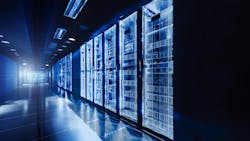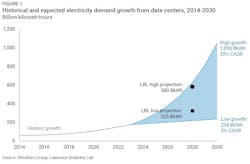Geothermal power shows potential to meet data center demands
Geothermal energy could be a welcome answer as the data center industry grapples with power acquisition.
A new Rhodium Group report argues that next-generation geothermal energy can economically power nearly two-thirds of the data center growth expected in the United States over the next decade.
The research firm said that next-generation geothermal could power up to 64% of data center demand growth by the early 2030s.
Geothermal hotspots
To supplement Rhodium’s study, Project InnerSpace, a non-profit focused on expanding the use of geothermal energy globally, launched a new data center module in its GeoMap™ tool that will inform data center developers about the most promising locations for geothermal development, both in the United States and around the globe.
A new data release in Project InnerSpace's GeoMap™ reveals development hotspots.
GeoMap’s new data center module, which includes a site favorability analysis, finds particular synergy for data centers in Texas, on federal lands throughout the western United States, and in several locations outside of the United States, including but not limited to Hungary, Indonesia, and the east coast of Australia.
New demands coming
The proposal for using geothermal energy is pivotal in the data center industry.
Being energy-intensive facilities that require constant, reliable baseload power and cooling, the US Department of Energy estimates that data centers as cloud computing expand to meet the growing demand of artificial intelligence (AI) applications.
The Rhodium Group report, conducted with support from Project InnerSpace, found that geothermal could meet 100% of anticipated data center demand growth in 13 of the 15 largest data center markets.
Also, the research firm found that if data centers are built where the subsurface heat resources are most abundant, geothermal energy could meet all data center demand and lower the national average levelized cost of electricity (LCOE) at geothermal-powered data centers by as much as 45%.
In addition to being a new energy source, geothermal energy could be deployed to cool data centers, which can make up to 40% of data center energy demand depending on the data center type. This means companies can pursue more efficient operations or build larger or more dense data centers with little increase in power usage.
"With the United States in an era of urgent competition to develop AI, all eyes are on data center growth and corresponding increases in energy demand," said Drew Nelson, VP of Programs at Project InnerSpace, in a release announcing the new study. "The abundance and reliability of geothermal makes it an obvious choice to meet a great deal of that demand, and for the first time, this research puts a number on exactly what that potential is.”
For related articles, visit the Business Topic Center.
For more information on high-speed transmission systems and suppliers, visit the Lightwave Buyer’s Guide.
To stay abreast of fiber network deployments, subscribe to Lightwave’s Service Providers and Datacom/Data Center newsletters.
About the Author
Sean Buckley
Sean is responsible for establishing and executing the editorial strategy of Lightwave across its website, email newsletters, events, and other information products.



